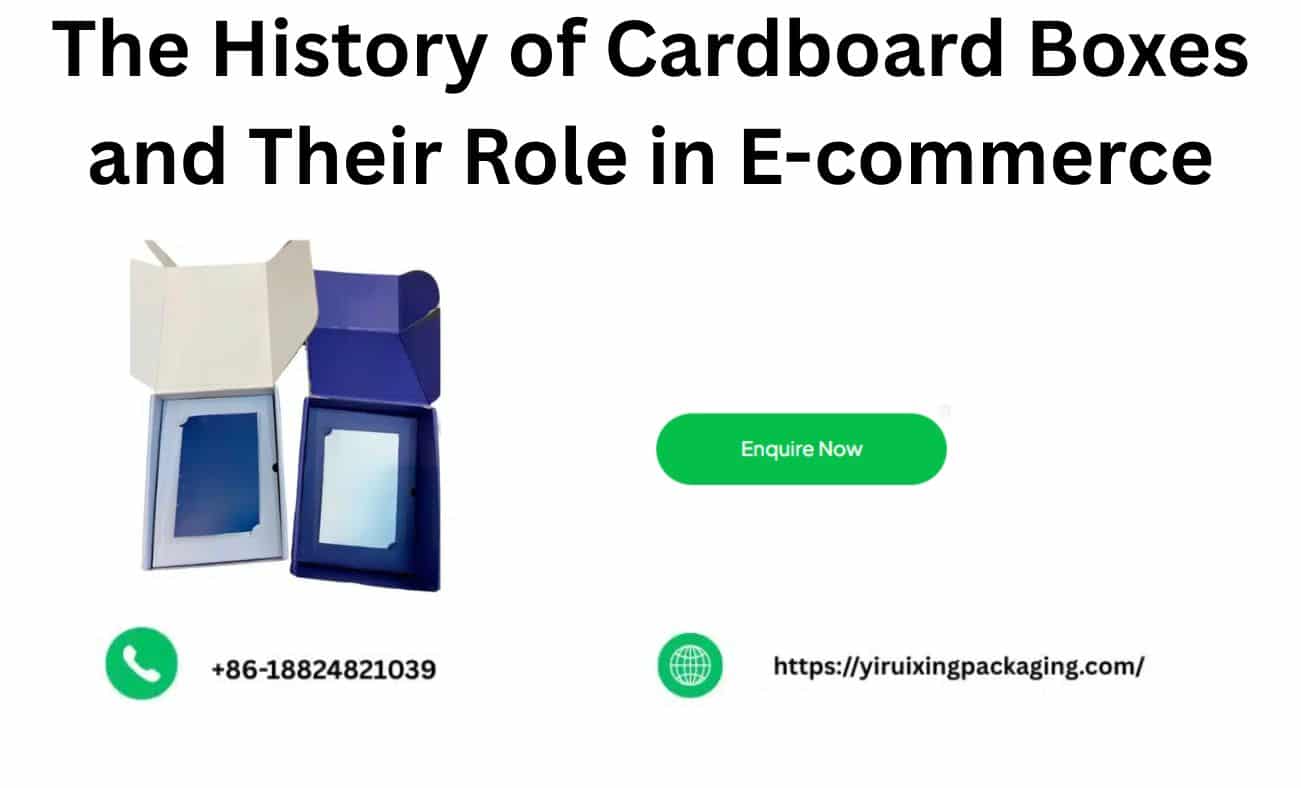The History of Cardboard Boxes and Their Role in E-commerce – The basic cardboard box, which is used in approximately 90% of retail packaging, has become the best way to ensure that purchased items online are delivered safely. The shipping box is cheap enough that all types of businesses can buy it. It is light enough to carry, but durable enough to protect contents against the rigours of the shipping process.
Table of Contents
ToggleBut how did this everyday box get invented? And what variations are there on the basic cardboard box that a small business owner could use? Let’s examine the history of the cardboard boxes and their role in e-commerce.
History of Cardboard
Although we use cardboard boxes as shipping containers for shipping our Amazon prime packages these days, they are older than you know. They were there at the invention of any paper in China! Cai Lun, a Chinese official in the Eastern Han Dynasty, combined pieces of tree bark, hemp, cloth, and plant fibres with water to produce the pulp that is still used for manufacturing cardboard today. In the east, the trade brought the art of making paper to Japan. In the West, it came to the Islamic World and ultimately to Europe.
In the early 1800s, in England, a basic paperboard carton was introduced. It looked basically like breakfast cereal cartons today. Then, in 1856, Englishmen Edward Allen and Edward Healey developed perforated paper that could be stuffed into men’s hats to retain warmth and to create stability for a hat. In 1871, Albert Jones in the United States used Allen and Healey’s folded paper to create the first cardboard, which he thought would be great for shipping glassware in because it protected the glass while in transit. Finally, in 1874, Oliver Long upgraded Jones’ design by adding inner sheets for both sides of the corrugated board to modernise Jones’ design. This is the first flexible shipping carton that guided everything that has been developed after it..
But the cardboard box continued to change. Carl F. Dahl, a German scientist, invented the Kraft process to produce a new kind of paper that is somewhat like cardboard boxes today in 1879. This paper is very stretchable but not easy to tear. It was created through the pulping of wood chips, i.e. producing large wood chips into an organic substance, somewhat like Cai Lun’s process, and provided the brown colour we are all accustomed to from a paper lunch bag and shipping boxes.
1895 saw the first contemporary cardboard box produced in the United States. This box presented a simple, durable solution to the demands for commercial transportation that came with the onset of the Industrial Revolution; made of Kraft paper manufactured using Dahl’s method and corrugated cardboard, which was a new invention at the time. These corrugated cardboard boxes were simple to manufacture and much lighter than wood pallets and crates.
There were many significant functions for corrugated cardboard boxes during World War II. Concern with German gas attacks in 1939 led the British government to provide all Londoners with protective masks, in cardboard boxes, packaged with instructions for use. CARE food parcels were sent to inhabitants of areas caused Article conditions by the war to recover after the war. The cardboard boxes contained items of use by the communities to recover or continue to assist in recovery. Margarine, canned beef and powdered eggs.
Fueling the Revolution in E-Commerce
The cardboard box has been affecting product storage, shipment protection, and business operations for decades.
Most importantly, shipping boxes have played a significant role in the rise of online retailing. In 2016, e-commerce sales amounted to $322 billion in the United States alone, and that number is only expected to grow. From individual entrepreneurs selling products on Etsy to e-commerce giants like Amazon, your image as a business is based on your ability to consistently deliver products to your customers. Shipping boxes make consistency possible!
Shipping Boxes
A durable shipping box that is not too expensive is ideal. The most important thing is making sure the product is safe during the (sometimes volatile) transit and handling processes. The best boxes for online shopping are modern shipping boxes made of Kraft paper with a folded structure to make them stronger.
Conclusion
Cardboard boxes have a long history in the field of packaging. They began as a simple way to store things and evolved into an important mechanism for global trade, particularly with the rise of e-commerce. Cardboard boxes, because of their strength, longevity and sustainability, are an important part of safely and quickly transporting products. With that said, we selected Yiruixing Packaging as our strong partner because they have been in business for over 13 years, care about sustainable materials, and can provide superior quality, custom packaging solutions that address functionality and brand value in an online marketplace today.
FAQs
What is the history of the cardboard box?
Cardboard boxes were created in France in 1840 for transporting Bombyx mori moths and their eggs used by silk makers, and for over a century, cardboard box manufacturing accounted for a significant industry in the Valréas region. The creation of light-flake cereals increased cardboard packaging use.
What is the purpose of cardboard boxes?
The primary function of cardboard packaging, however, is to protect the goods (often solid things) that have to be stored and transported. This is rather a broad perspective on cardboard packaging since cardboard can store anything from electronics to household goods.
What does a cardboard box symbolise?
It signified an economic transaction, plus of the actual transfer of goods from point A to point B; in sum, capitalism. The cardboard box also exemplifies our current society of throwaway commodities, as we watch mountains of culled or deconstructed boxes thrown on the street for recycling.





